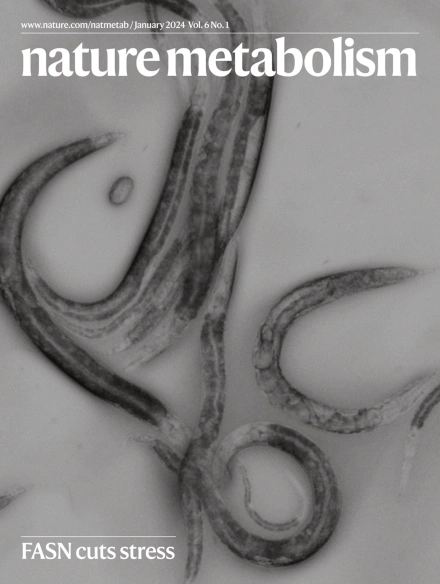Cold acclimation with shivering improves metabolic health in adults with overweight or obesity
IF 20.8
1区 医学
Q1 ENDOCRINOLOGY & METABOLISM
引用次数: 0
Abstract
Cold acclimation increases insulin sensitivity, and some level of muscle contraction appears to be needed for provoking this effect. Here 15 men and (postmenopausal) women with overweight or obesity, the majority of whom had impaired glucose tolerance, were intermittently exposed to cold to induce 1 h of shivering per day over 10 days. We determined the effect of cold acclimation with shivering on overnight fasted oral glucose tolerance (primary outcome) and on skeletal muscle glucose transporter 4 translocation (secondary outcome). We find that cold acclimation with shivering improves oral glucose tolerance, fasting glucose, triglycerides, non-esterified fatty acid concentrations and blood pressure. Cold acclimation with shivering may thus represent an alternative lifestyle approach for the prevention and treatment of obesity-related metabolic disorders. ClinicalTrials.gov registration: NCT04516018 . Sellers, van Beek and colleagues show that intermittent cold exposure for 10 days, which induced 1 h of shivering per day, improves glucose homeostasis, lipid metabolism and blood pressure in adults with overweight or obesity.


寒战适应可以改善超重或肥胖成年人的代谢健康
寒冷环境会增加胰岛素敏感性,而某种程度的肌肉收缩似乎需要引起这种效应。在这里,15名超重或肥胖的男性和(绝经后)女性,其中大多数有糖耐量受损,间歇性暴露在寒冷中,在10天内每天诱发1小时的颤抖。我们确定了寒战对夜间空腹口服葡萄糖耐量(主要结局)和骨骼肌葡萄糖转运蛋白4易位(次要结局)的影响。我们发现寒战能改善口服葡萄糖耐量、空腹葡萄糖、甘油三酯、非酯化脂肪酸浓度和血压。因此,寒战可能代表了预防和治疗肥胖相关代谢紊乱的另一种生活方式。ClinicalTrials.gov注册:NCT04516018。
本文章由计算机程序翻译,如有差异,请以英文原文为准。
求助全文
约1分钟内获得全文
求助全文
来源期刊

Nature metabolism
ENDOCRINOLOGY & METABOLISM-
CiteScore
27.50
自引率
2.40%
发文量
170
期刊介绍:
Nature Metabolism is a peer-reviewed scientific journal that covers a broad range of topics in metabolism research. It aims to advance the understanding of metabolic and homeostatic processes at a cellular and physiological level. The journal publishes research from various fields, including fundamental cell biology, basic biomedical and translational research, and integrative physiology. It focuses on how cellular metabolism affects cellular function, the physiology and homeostasis of organs and tissues, and the regulation of organismal energy homeostasis. It also investigates the molecular pathophysiology of metabolic diseases such as diabetes and obesity, as well as their treatment. Nature Metabolism follows the standards of other Nature-branded journals, with a dedicated team of professional editors, rigorous peer-review process, high standards of copy-editing and production, swift publication, and editorial independence. The journal has a high impact factor, has a certain influence in the international area, and is deeply concerned and cited by the majority of scholars.
 求助内容:
求助内容: 应助结果提醒方式:
应助结果提醒方式:


